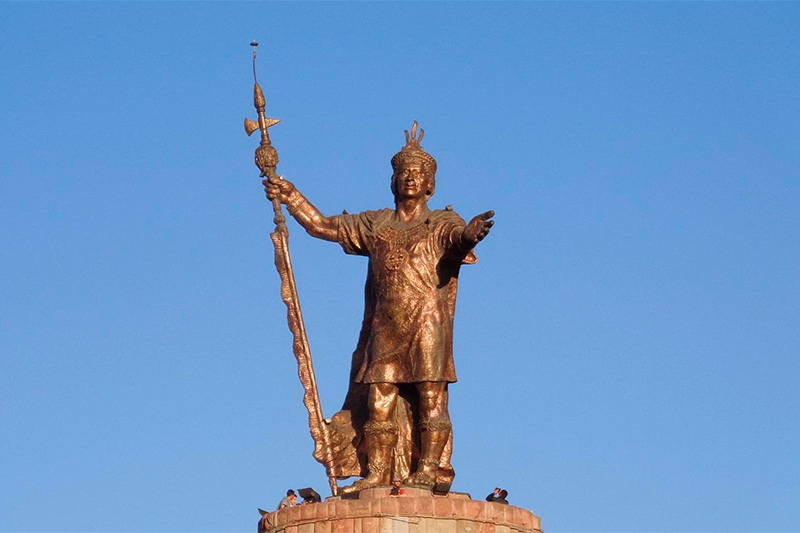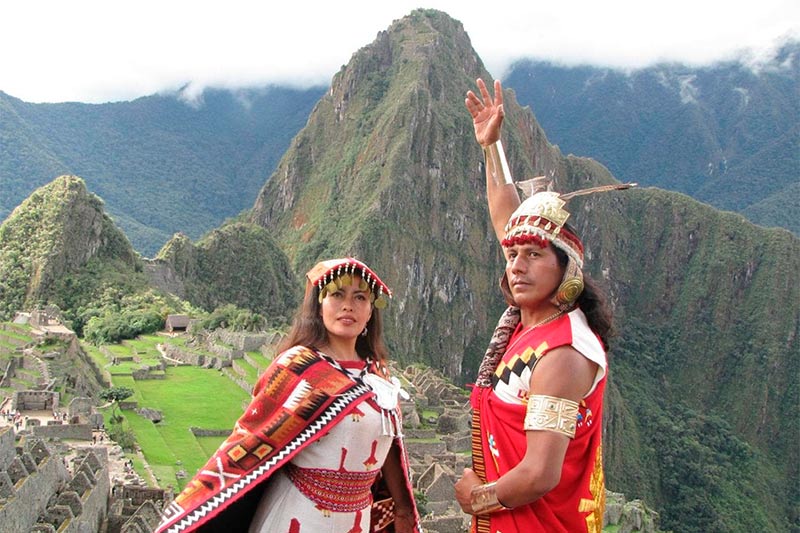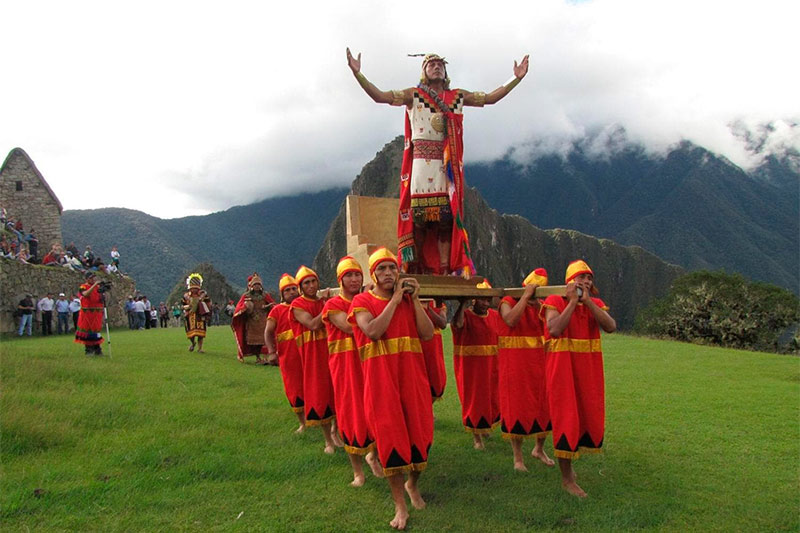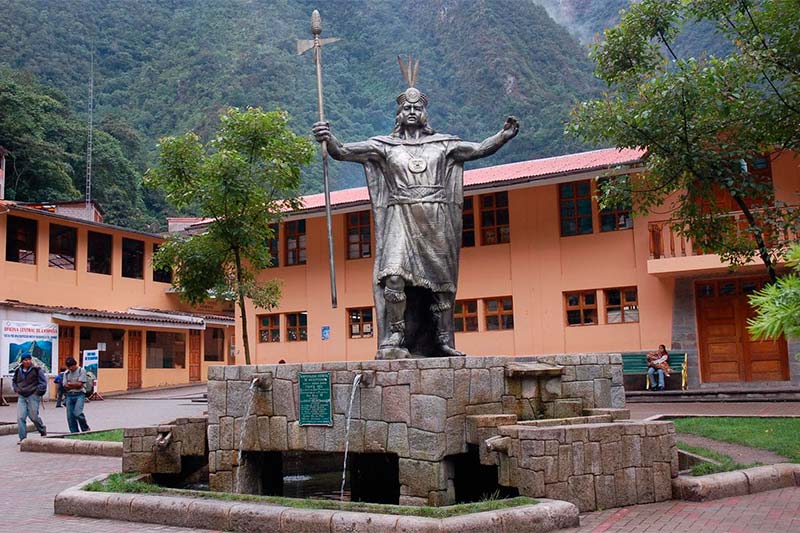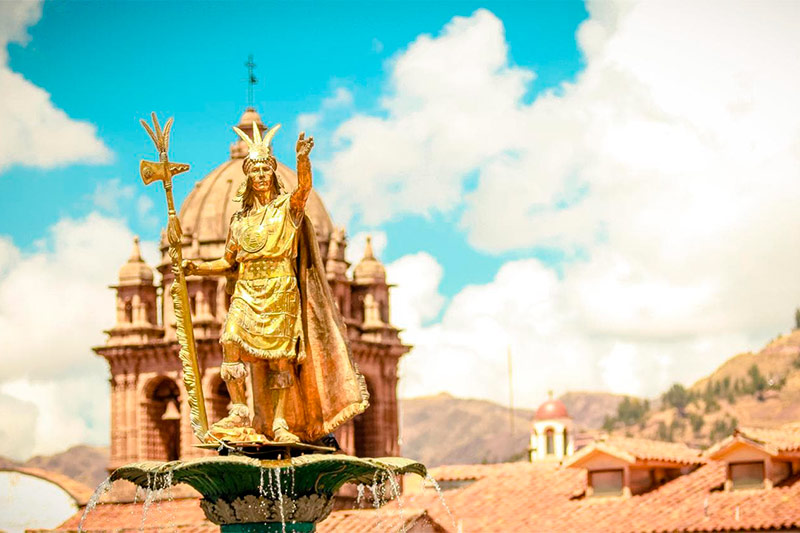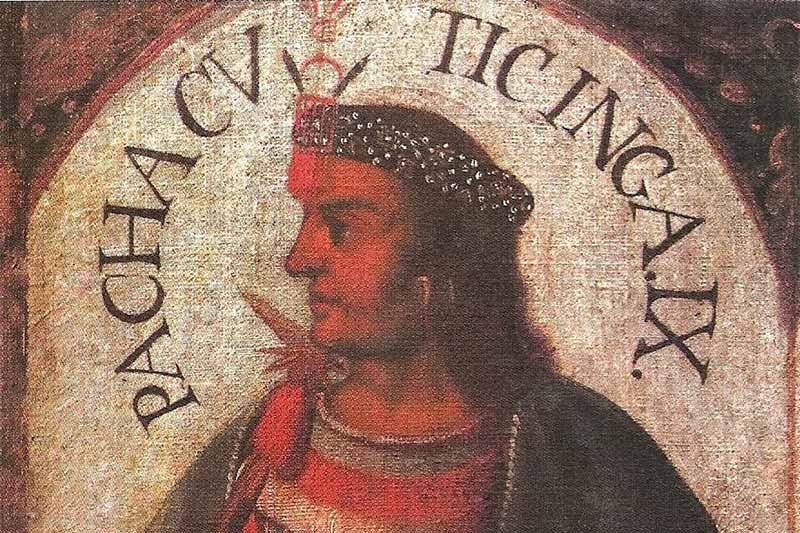The Inca Pachacutec, the builder of Machu Picchu
Perhaps the Incas would not have achieved their great conquests and architectural monuments without the existence of their emperor Pachacutec. During the 15th century, this Inca ruler defeated his Chanca enemies. He then expanded the borders of his kingdom, transforming it into the largest empire in South America. Under his power, he reformed the state and built roads, cities, temples, and monuments as incredible as Machu Picchu. All chroniclers agree that he was the greatest emperor in the Inca Empire.
- Who was the Inca Pachacutec?
- History of Pachacutec
- The war against the Chancas
- The empire of the Tahuantinsuyo
- The builder of Machu Picchu
- Other works of Pachacutec
- Death of Pachacutec
- Gallery of photos
- Teachings of the Inca Pachacutec
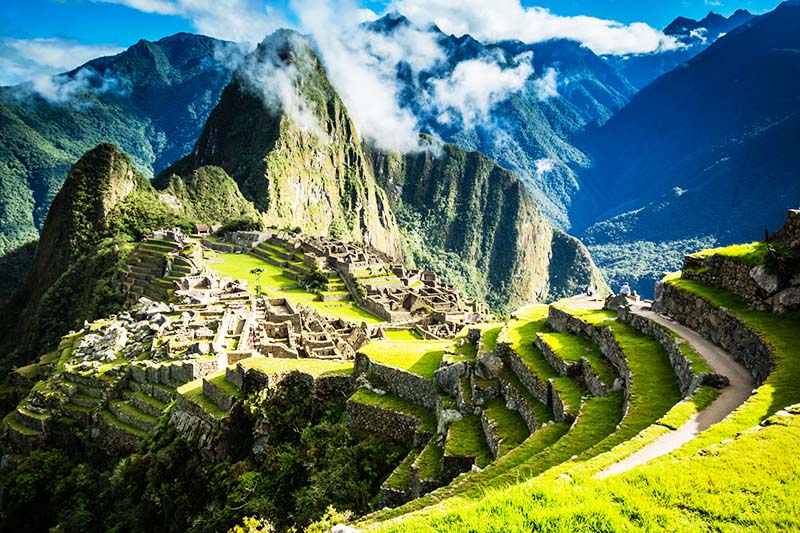
Machu Picchu, one of the new 7 Wonders of the World
Who was the Inca Pachacutec?
- Pachacutec (1418 – 1471), also called ‘Pachacutec Inca Yupanqui’ was the ninth Inca ruler who would change the small regional state into a vast and prosperous empire, which covered part of the current territories of Peru, Bolivia, Ecuador, Colombia, Argentina and Chile. His name means ‘He who changes the earth’. According to the English historian Clement Markham, he was “the greatest man that the aboriginal race of America has ever produced”.
- He was the son of the Inca Huiracocha and the coya Mama Runtu. His original name was Cusi Yupanqui’ (Happy Prince). As a child he was educated in the ‘Yachaywasi’ (Houses of Knowledge) in history, law, language and the art of war. As a teenager he was already admired by the upper classes for his bravery and intelligence.
- He was promoted as Inca ruler in approximately 1438. As the new emperor he expanded the territory, rebuilt the Coricancha, ordered the construction of Machu Picchu, reformed the government and made hundreds of architectural works of great importance. He died approximately in 1471, leaving his son Tupac Inca Yupanqui as his successor. The location of his mummified body is still a mystery. He is considered the best Inca ruler. One of the most important figures in the history of Peru.
History of Pachacutec
- The Inca Huiracocha named his brother Inca Urco as his successor to the throne. This one did not have the abilities and intelligence of his brother Pachacutec. Approximately in 1430, the ethnic group chanca, maximum adversaries of the Incas for the control of the territory, sent their emissaries to Cusco asking for the surrender before a possible invasion.
- The Inca Huiracocha, together with his son and successor Inca Urco, fled from the city of Cusco in the direction of his residence of Caquia Xaquixahuana. Then the young Pachacutec took the leadership of the defense receiving the support of the Inca generals and the nobility.
- Pachacutec asked for the return of his father Huiracocha but he could not convince him. Then he convinced the neighboring ethnic groups to support him to expel the chancas. Once he defeated his rivals, he had to face his brother Inca Urco for the control of the power.
- Pachacutec finally won and in 1438 he was clothed with the ‘Mascaipacha’ (symbol of Inca power). During his rise to power, he asked that his father Huiracocha be pardoned for abandoning Cusco and that he be the one to hand over power to him. Thus began a new stage of the Inca government: the imperial stage.
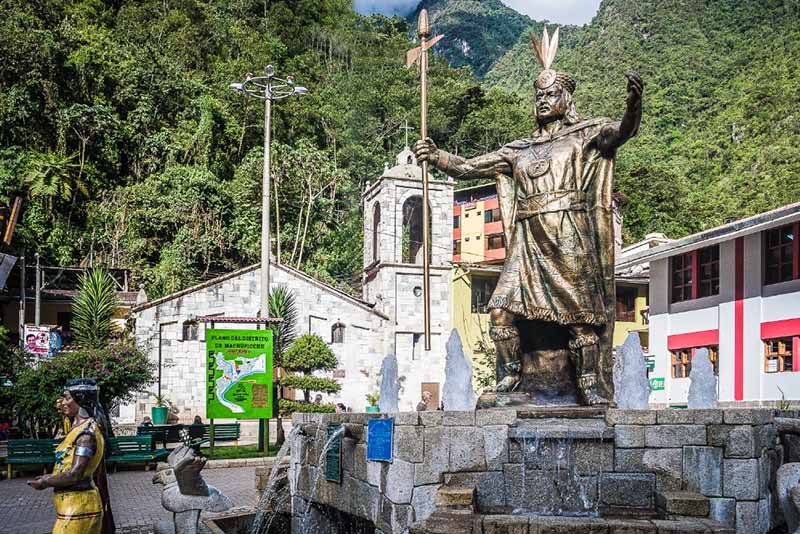
Statue of the Inca Pachacutec, located in the main square of the town of Aguas Calientes – Machu Picchu
The war against the Chancas
- For many years, the Chancas were the Incas’ neighbors and greatest enemies for the control of the southern Andean region. Approximately in 1430, the Chancas threatened to invade Cusco, which caused the flight of the Inca Huiracocha and the providential appearance of his son, the Inca Pachacutec.
- After the victory of Pachacutec in the vicinity of the city of Cusco, the Chancas fled and took refuge in ‘Ichupampa’, from where they reorganized. Then the Incas went on the offensive, unleashing the epic and mythical battle of ‘Yahuar pampa’ (Pampa of blood).
- According to the chronicles, the Inca victory at Yahuar Pampa would mark the beginning of later conquests under the command of Pachacutec. For the Inca cosmovision, this victory was the decision of the gods who designated Pachacutec as their leader. From then on, the curacazgo of Cusco would become an empire and Pachacutec would be the first emperor.
The empire of the Tahuantinsuyo
- After the Inca victory in ‘Yahuar pampa’, the Inca Pachacutec led the expansionist process through conquests and alliances with the subdued peoples. Then, the empire grew so rapidly that he had to create the new ‘Tahuantinsuyo’ (empire of the Incas divided into 4 regions) to better manage the new limits of its territory.
- Together with the creation of the empire, Pachacutec ordered the construction of hundreds of kilometers of roads that communicated each city of the new territory. Thus was born the famous Inca road network known as ‘Qhapac ñan’, which exceeded 30 thousand kilometers of roads.
- Pachacutec was not only the leader of the great Inca expansion, but he was also the reorganizer of the political and social system of the new empire. He ordered the construction of citadels, terraces, temples, streets, and squares throughout the empire but mainly in the city of Cusco.
Pachacutec called the flourishing Inca empire ‘Tahuantinsuyo’ because it was divided into 4 regions: tawa means ‘four’ and suyo, ‘region’. Each of these regions acquired a name: the Collasuyo (south-east), the Chinchaysuyo (north-west), the Antisuyo (north-east), and the Contisuyo (west). The city of Cusco was located in the center of the vast empire.
The builder of Machu Picchu
- According to the investigations carried out with carbon 14, the citadel of Machu Picchu was built in 1450 when the empire of the famous Inca Pachacutec ruled. For its construction he brought from distant lands groups of thousands of men belonging to the recently conquered peoples.
- The construction of Machu Picchu had several reasons. The first is that it served as a temporary residence for the Inca Pachacutec and his family. It is also believed that it served as a watchtower over the eastern kingdoms. Finally, it was used as a temple and a place of residence for approximately one thousand people.
- According to some chroniclers, the real name of Machu Picchu is ‘Patallaqta’, the place that Pachacutec would have chosen to be buried. Some researchers suggest that the mummy of the Inca is located there. Others believe that it is located in the neighborhood of San Blas in the city of Cusco. Some even point out that it is buried under the hospital of San Andres in Lima. The truth is that no one has found these remains.
Other works of Pachacutec
- Reconstruction of the temple of Coricancha in the city of Cusco.
- Beautification of the city of Cusco, with squares, neighborhoods and palaces.
- Reconstruction of the Coricancha fortress.
- Construction of the Ollantaytambo citadel in the Sacred Valley.
- Construction of hundreds of kilometers of the ‘Qhapac ñan’ road network.
- Establishment of the Wawa Inti Raymi festivity.
- Obligation of labor for the benefit of the Inca state.
- Establishment of the sun as the supreme god of the empire.
Death of Pachacutec
- Pachacutec died a natural death in approximately 1471. When he died, the Inca empire was undergoing a great organization and expansion of its territory. His successor was his son Tupac Inca Yupanqui who already assumed a leading role conquering new territories for his father.
- After his death, Pachacutec (as was customary) was mummified and received a sumptuous tribute in the plaza of Aucaypata (today’s Plaza de Armas of Cusco), dressed in gold, silver and feather ornaments and more.
- His mummy was transferred to the temple of Tococache (present church of San Blas in Cusco), a building ordered to be built by Pachacutec himself to be the temple of the god of lightning (Illapa).
- History praises Pachacutec as one of the great governors of pre-Columbian times. According to Peruvian historian Maria Rostworowski, the Inca Pachacutec: “with his measures he gave geographical and idiomatic unity; initiating the uniformity that later allowed the formation of present-day Peru”.
Teachings of the Inca Pachacutec
According to chronicles, the Inca Pachacutec was the creator of famous phrases:
- “He who envies the good draws evil from them himself, just as the spider draws poison from its prey.”
- “The noble and courageous man is known for his patience in adversity. Impatience is a sign of a vulgar and base mind, badly taught and worse trained.”
- “Governors must remember two things with great attention: first, they and their subjects must observe and comply with the laws of the empire to perfection. Secondly, they must pay great vigilance and care to the common and particular resources of their province”.
- “He who cannot govern his house and family will be much less competent to govern a state, and should not be given power over others.”
- “The physician or herbalist who is ignorant of the virtues of herbs, or who knows only those of some, but does not try to know the virtues of all, knows little or nothing. He must work until he knows the virtues of all, whether useful or harmful, in order to merit the title.”
- “He who seeks to count the stars, not knowing how to count the strings and knots of a ‘quipu,’ is worthy of laughter.”
- “Adulterers who injure the reputation and quality of others, and take away the tranquility of others should be declared thieves, and therefore be condemned to death and without any remission.”
By Ticket Machu Picchu – Last updated, August 16, 2024
